Best and worst roses for your soil and climate
strawchicago z5
8 years ago
last modified: 2 years ago
Featured Answer
Comments (198)
Related Discussions
Your Best and Worst Plants for 2008
Comments (6)Hi there, I hate to see an unanswered post! I'm sure that everyone has plants they love and ones they love to hate, but maybe this is a place too far away from the beaten path for a lot of people to find. Maybe you would have better luck with it in a different forum, like one on herbs or vegetables. I am in a very different zone, but I have good luck with snapdragons, which reseed in my beds if I'm not careful. Sometimes they even winter over under some leaf mulch. Maybe it is too hot there? I don't really know. I grow Kentucky Blue pole beans, and they are quite nice, but so are Kentucky Wonders. We had a cool summer, so it was a great broccoli year here. I grew three kinds, and they were all great. I tried Opalka tomatoes this year, and they were not fast, but bountiful and I'll grow them again. Rosemary and lavender are two of my favorites! I have to grow my rosemary in a pot and bring it in every winter, but it seems to manage and I love having it. I have two kinds of lavender, both the sturdy hardy kinds, Grosso and Hidecote. It's a little dicey in my heavy-ish soil, but they manage. I look at the Brugs in the catalogs and think they are great, but they're not for me here! So you get to enjoy things that I don't! As far as germinating seeds, read and follow the directions on seed packages, and most of the time things work out. Try to grow things at the best time for the plant, like when it is cool for radishes and snapdragons. What kind of yarrow were you trying to grow? I have two kinds, but I've never tried to grow them from seed. The Moonshine yarrow has reseeded in my garden, but not too often. The Summer Pastels never has, but there is plenty to divide. My book on germinating seed says that yarrow needs light to germinate, can be sown inside at 70 degrees or outside. Sounds like the tiny seeds need to be kept moist and warm on top of the soil. Keep trying!...See MoreBest orange-color rose for coastal San Diego climate
Comments (11)Thank you so much, Hoovb. I am truly grateful. Does your EDI fades to pink? What else, on your opinion, would look good between HC and Strike it Rich? Also, the flower bed gets all day hot-hot sun. I thought about Chihuly but I already have it planted in the opposite flower bed. It is really important about the mildew and rust resistance. After years of trying...a week ago I had to get rid of Gypsy and another rose that were truly complementing my Julia C. So now she is looking for new friends too. I spent days on Internet trying to decideðÂÂÂ. Please help! Overall, what would be of your rust and mildew-free roses? I am 5 miles from the ocean. Thanks...See MoreWorst roses in Carolinas...whats yours?
Comments (8)I am surprised to see 'Elle' on your list. I planted one last year and it is the best bloomer of all of my hybrid teas. There are 12 buds on it now. Maybe that's because I put in human hair, banana peel and lots of bone meal in the Miracle Gro Garden Soil for Roses when I dug the hole? I've had only a trace of BS and Bayer's knocked that out. Moved to SC from CO 2years ago and it's been a real challenge to grow roses here. The soil and climate on the Western Slope of the Rockies are the rose lover's dream. Clay soil and very very dry there (desert mountains). I had 15 roses, 12 of them hybrid teas, and never had to spray. There were aphids in early spring, but the ladybugs and praying mantis hordes took care of those right away. I suppose my greatest disappointment here in SC is my 'Billy Graham'. It's not doing very well at all. The one I had in CO grew like a climber even though it was a HT. Win some, lose some....See MoreLinks to hardy roses in cold zones & best roses for hot & dry climate?
Comments (30)Below is the info. that Floweraremusic (zone 5) in Washington gave on her 2020 winter-survival. She has alkaline clay with rocks at bottom like mine & less snow in winter: "My hardiest roses are the Canadians. John Davis, John Cabot, Wm. Baffin, Morden Sunrise, Morden Blush and Morden Centennial, Victorian Memory aka Isabelle Skinner, also a Canadian rose. All these only have tiny bit of tip damage and bloom a lot with no special care. Also, my Hybrid Perpetuals only have tip damage after winter. Magna Charta, Mrs. John Laing, Black Prince and Marchesa Buccella. The only negative is they don’t have long enough cutting stems. All my Austins are very hardy. The one I just can not grow is Jude. Leonardo da Vinci is super hardy and always healthy. Quietness comes through winter very well. Even Rouge Royale survives beautifully. Cinderella Fairy Tale is very hardy. Gruss an Aachen also. Ballerina and Marjorie Fair are both hardy. Poseidon, Princess Charlene de Monaco and Crazy Love didn’t do as well as I’d hoped. The surprise losses this year are Quicksilver, and Dames de Chenonceau who is left with only 1 cane. Versigny is also reduced down to almost nothing. This was a mild winter with very little snow. " Floweraremusic (zone 5). From StrawChicago (zone 5a with hard black-gumbo alkaline clay & less snow but with freezing rain in winter). Versigny didn't survive winter either. So I lost Versigny TWICE. Besides Versigny, other wimpy own-root roses that don't survive winter well: Paul Neyron, Anna's Promise, Pink Peace (own-root died 1st winter, but grafted-Pink Peace survives many winter), Elantyne, Jude the Obscure, Young Lycidas (bought as grafted-on-Dr.Huey, now with only one cane), Mary Daly, and many floribundas don't survive my zone 5a: Pink Chiffon, Sheila's perfume, King Arthur, Deep Purple, Shocking blue, Honey Bouquet (survived 1 winter). Polka Climber (survived 1 winter), Cloutilde Soupert (died twice on me). Sutter's Gold didn't survive winter, same with many fragrant mini-roses from Burlington nursery. Below are my hardy OWN-ROOT roses in my zone 5a alkaline clay, only Double Delight, Young Lycidas and Lavender Crush are grafted-on-Dr.Huey. Bold-faced are the very vigorous ones: Own-roots with 3 feet of green canes: Carding Mill (since 2012), Princess Charlene of Monaco, Duchess de Rohan, Crown Princess Magareta (since 2012), Zepherine Drouhin, Lady of Shalott, James Galway, Lavender Crush, Queen of Sweden (gave away but very hardy), Poseidon (right below the rain-spout, dug down to 2.5 feet), Scepter'd Isle (very big & hardy own-root but gave that away with its lousy scent). Own-roots with 2 feet of green canes: La Reine (many winters), Blue Mist (since 2012), Prairie Harvest (since 2014), Mary Magdalene (since 2011), Evelyn (since 2012), Radio Times (since 2011), Pat Austin (since 2011), Christopher Marlowe (since 2011), Golden Celebration (since 2011), Lilian Austin (gave away but very hardy), the Squire, the Dark Lady, Wise Portia survived 4 winters but died in poor drainage clay, Dee-lish (since 2015), Twilight Zone (since 2016), William Shakespeare. 2000 (since 2011), Comte de Chambord (since 2012), Princess Anne, Sweet Mademoiselles, Aloha climber, Orchid Romance, Bohemian Rhapsody, Marie Pavie, Lagerfeld (since 2017), Frederic Mistral survived 2 winters but died when I didn't winter-protect with leaves, Sonia Rykiel (survived 3 winters) but died in freezing rain winter, same with 1/4 of the street-trees in my neighborhood, Excellenz von Shubert (since 2013), Own-roots with less than 1 foot of green canes: Gina's rose, Tchaikosky (since 2015), Cornelia (since 2018), Bolero (few winters), Peter Mayle, Sharifa Asma, Neil Diamond, Amber Queen, A Shopshire Lad, Strike it Rich, Old Port (since 2012), Veteran's Honor (many winters), Double Delight (grafted on Dr.Huey), Savannah, Tess of d'Uberville, Gene Boerner (since 2014), thornless Yves Seedling (since 2013), Stephen big Purple (since 2012), Louise Este, Mirandy, Crimson Glory, Liv Tyler survived 1 winter but needs winter-protection, Rouge Royal (bought last year with no winter-protection). Annie L. McDowell (survived 2 winters but needs a wet-spot since it's almost thornless), Nahema (survived 1 winter then died during freezing-rain winter), same with Eyes-for-you (drought-tolerant and doesn't like freezing wet winter), Souvenir du President Lincoln, Madame Issac Pererie and Madame Earnest Calvat, Firefighter (survived 2 winters) but died since it's next to tree. Bayes Blueberry (survived many winters but I gave away), Charles Darwin (gave away since it fades badly), Arthur Bell (since 2012 & killed it since I don't like the flowers). StrawChicago....See Morestrawchicago z5
7 years agolast modified: 7 years agoVaporvac Z6-OhioRiverValley
7 years agolast modified: 7 years agostrawchicago z5 thanked Vaporvac Z6-OhioRiverValleystrawchicago z5
7 years agolast modified: 7 years agostrawchicago z5
7 years agolast modified: 7 years agostrawchicago z5
7 years agolast modified: 7 years agostrawchicago z5
7 years agolast modified: 7 years agoVaporvac Z6-OhioRiverValley
7 years agolast modified: 7 years agostrawchicago z5 thanked Vaporvac Z6-OhioRiverValleystrawchicago z5
7 years agolast modified: 7 years agostrawchicago z5
7 years agolast modified: 7 years agostrawchicago z5
7 years agolast modified: 7 years agostrawchicago z5
7 years agolast modified: 7 years agostrawchicago z5
7 years agolast modified: 7 years agostrawchicago z5
7 years agolast modified: 7 years agostrawchicago z5
7 years agolast modified: 7 years agostrawchicago z5
7 years agolast modified: 7 years agostrawchicago z5
7 years agolast modified: 7 years agoVaporvac Z6-OhioRiverValley
7 years agolast modified: 7 years agostrawchicago z5 thanked Vaporvac Z6-OhioRiverValleystrawchicago z5
7 years agolast modified: 7 years agostrawchicago z5
7 years agolast modified: 7 years agostrawchicago z5
7 years agolast modified: 7 years agostrawchicago z5
7 years agolast modified: 7 years ago
Related Stories

GARDENING GUIDESHow to Stop Worrying and Start Loving Clay Soil
Clay has many more benefits than you might imagine
Full Story
GARDENING GUIDES7 Fall Beauties for Mild-Climate Container Gardens
We're talking long-term relationship: These showy shrubs will bring color to your container garden autumn after autumn
Full Story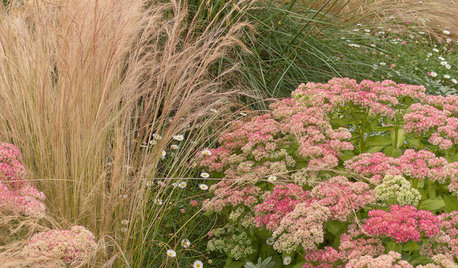
GARDENING GUIDESGreat Garden Combo: 3 Soft-Looking Plants for a Dry Climate
Weave a romantic tapestry with this drought-tolerant combination of plants as tough as they are lovely
Full Story
GARDENING GUIDESGardening Solutions for Heavy Clay Soils
What’s a gardener to do with soil that’s easily compacted and has poor drainage? Find out here
Full Story
GARDENING GUIDESHow to Pick a Mulch — and Why Your Soil Wants It
There's more to topdressing than shredded wood. Learn about mulch types, costs and design considerations here
Full Story
ARCHITECTURE15 Smart Design Choices for Cold Climates
Keep your home safe and comfortable in winter by choosing the right home features and systems
Full Story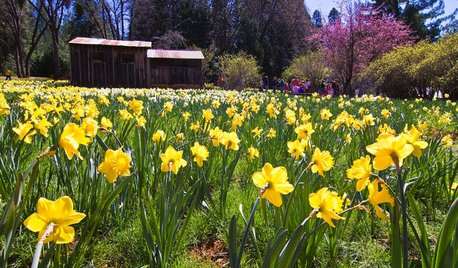
GARDENING GUIDES7 Bulbs That Flourish in Mild Climates
Fall planting: For gardens that don't see harsh winters, different guidelines for choosing and planting spring-blooming bulbs apply
Full Story
LANDSCAPE DESIGNCelebrate a Sunny Climate With the Right Leafy Palm for Your Site
So you get freezes or floods. So your garden is small. These palms send excuses riding off into the tropical sunset
Full Story
SPRING GARDENINGHow to Grow a Rose Garden in Pots
Everything can come up roses, even without a plot of soil in sight. This step-by-step guide to growing roses in containers shows you how
Full Story
WINTER GARDENINGPruning Secrets for Exquisite Roses
Encourage gorgeous blooms year after year with this time-tested advice on how to prune your rosebush in winter for health and shape
Full Story


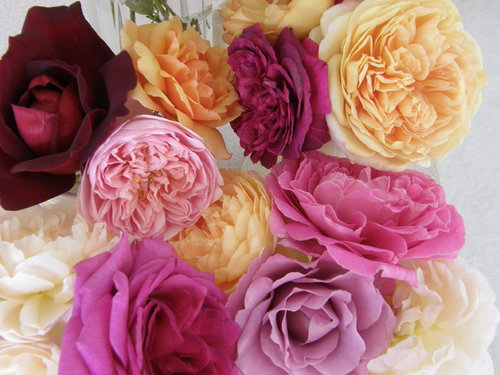

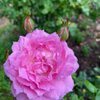
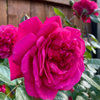
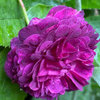

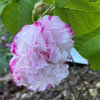
Kelly Tregaskis Collova